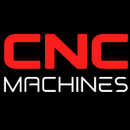Aerospace Bushings: Purpose, Types, and Key Manufacturing Considerations

Aerospace Bushings: Purpose, Types, and Key Manufacturing Considerations
Bushings are critical to ensuring smooth movement, stable alignment, and vibration damping in a wide range of aerospace applications. From flight control linkages to landing gear assemblies, these components act as low-friction interfaces or protective barriers for rotating shafts and pivot joints. Below, we explore how aerospace bushings work, the different types available, and the techniques used to produce these vital parts for high-altitude performance.
The Importance of Aerospace Bushings
In aircraft and spacecraft, weight minimization and reliability are paramount. Bushings help optimize both by reducing wear, noise, and vibration in mechanical systems. By forming a controlled interface between moving parts—such as flight control rods or landing gear struts—bushings enable:
- Smooth Pivoting: They prevent metal-to-metal contact, lowering friction and lengthening component life.
- Vibration Isolation: Some bushing designs absorb and dampen mechanical shocks, protecting sensitive components from stress or damage.
- Alignment and Load Distribution: Bushings help maintain consistent tolerances, distributing loads more evenly across pivots or linkages.
Common Aerospace Bushing Types
1. Plain Bushings
Description: Often made of metallic or composite materials, plain bushings feature a simple cylindrical design without rolling elements. They usually rely on lubrication (solid film or grease) to reduce friction.
Advantages:
- Lightweight, often with minimal part counts.
- Reliable in high-vibration environments if properly lubricated or made from self-lubricating materials (like PTFE-lined composites).
Applications:
- Flight control linkages, cargo doors, and other pivot points experiencing moderate loads.
2. Spherical Bearings (Spherical Bushings)
Description: These incorporate a concave inner surface, allowing for angular misalignment of shafts or rods. They work well where components pivot in multiple planes or angles.
Advantages:
- Handle complex load angles and absorb structural misalignment.
- Offer extended fatigue life when made from corrosion-resistant metals (e.g., stainless steel or titanium).
Applications:
- Control arms, hinge points in landing gear, engine mounts, or helicopter rotor attachments.
3. Elastomeric or Rubber Bushings
Description: These bushings employ elastomeric (rubber-like) materials that provide both damping and compliance. They insulate against vibration or noise transfer between connected parts.
Advantages:
- Excellent shock absorption, reducing pilot fatigue and preserving sensitive avionics.
- Accommodate small misalignments without significant wear.
Applications:
- Cabin interiors, engine isolators, suspension systems in rotorcraft landing gear, or float planes.
4. Composite Bushings (Lined or Self-Lubricating)
Description: Composite bushings often include PTFE (Teflon) or other low-friction coatings. Their structure can integrate fibers (carbon or glass) in a polymer resin matrix for extra strength.
Advantages:
- Self-lubricating surfaces reduce or eliminate the need for scheduled greasing.
- Resistant to corrosion, enabling long service life in harsh operating environments (humidity, chemicals, salt spray).
Applications:
- Rudder and aileron hinges, actuator pivot points, or anywhere tight tolerances and minimal maintenance are key.
Materials and Manufacturing
High-Strength Alloys
Metals such as stainless steel, Inconel, and titanium play prominent roles in aerospace bushings where high temperature or corrosion resistance is needed. These alloys can withstand repeated stress cycles without deforming or losing dimensional accuracy.
Manufacturing Methods:
- Precision Turning: CNC lathes shape the bushing’s outer and inner diameters to exact tolerances.
- Heat Treatment: Techniques like quenching or vacuum annealing enhance mechanical properties.
- Coatings: Surface treatments (e.g., nitriding, plating) protect against wear or reduce friction further.
Composite Materials
Fiber-reinforced resins or layered structures incorporating PTFE and metal backing can serve as self-lubricating bushing elements. They excel in lightweight designs with low friction and minimal maintenance overheads.
Production Processes:
- Winding or Laminating: Layers of fiber material and resin cure into cylindrical shapes.
- Machining: Secondary operations add chamfers, lubrication grooves, or custom bore dimensions.
Elastomeric Formulations
Where shock absorption is crucial, rubber bushings or elastomer-metal hybrids are molded into specific shapes. Engineers must precisely match elastomer durometer (hardness) to the load and temperature requirements of the aircraft.
Quality Assurance and Testing
In the aerospace sector, bushings undergo rigorous checks and balances to ensure they meet flight-critical standards:
- Dimensional Inspections
- Coordinated measuring machines (CMM) or specialized gauges confirm that inner/outer diameters, length, and tolerances match design specs.
- Non-Destructive Testing (NDT)
- Techniques like eddy current or dye penetrant inspections identify any potential surface cracks or flaws in metallic bushings.
- Mechanical Testing
- Fatigue cycles, tensile strength, and environmental cycling tests (e.g., salt spray, temperature extremes) validate performance under realistic conditions.
Applications and Usage Scenarios
- Flight Control Systems
- Elevator, rudder, and aileron hinges frequently employ plain or self-lubricating bushings for smooth articulation.
- Spherical bearings accommodate multi-directional loads in pushrod assemblies.
- Landing Gear
- Shock struts, wheel assemblies, and steering linkages incorporate elastomeric bushings or spherical bearings to handle vertical and lateral loads.
- Damping properties reduce noise and vibration transmitted to the fuselage.
- Engine Mounts
- Some turbine installations rely on spherical bushings or elastomeric isolators to manage high-frequency vibrations.
- Minimizes stress on the engine nacelle and reduces cabin noise.
- Spacecraft and Satellites
- Certain deployment arms or solar panel hinges use lubricated bushings where minimal servicing is allowed.
- Low-friction composites ensure consistent movement in vacuum conditions.
Looking Ahead: Innovations in Aerospace Bushings
As composite materials advance, lightweight self-lubricating bushings are becoming increasingly prevalent. Researchers are investigating nanocomposite coatings and smart sensors embedded within bushing structures to monitor wear or temperature in real time. These developments aim to reduce in-flight failures, streamline maintenance schedules, and further optimize weight savings.
Conclusion
Aerospace bushings—whether plain, spherical, elastomeric, or composite—are indispensable for minimizing friction, managing vibrations, and maintaining proper alignment in flight-critical systems. Their design hinges on selecting the right materials (metals, composites, elastomers) and manufacturing methods (CNC turning, heat treatment, molding) to ensure reliability in harsh conditions. As aircraft and spacecraft evolve to meet stringent efficiency and safety demands, engineering breakthroughs in bushing technology continue to drive performance enhancements across the aviation and aerospace sectors.


